Life Extension Magazine®
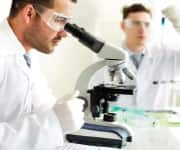
The liver functions to cleanse our body of pollutants and internally-generated waste products like ammonia.1 It is the largest organ inside your body and has at least 500 life-sustaining functions.1
Liver function declines with aging.2 Left unchecked, toxic overload can lead to conditions ranging from cirrhosis and hepatitis to non-alcoholic fatty liver disease and even cancer.3-6
Optimal liver function is critical to all aspects of health.1 Maintaining robust liver capacity ensures our body will effectively rid itself of heavy metals, pollutants, and other toxins.1
Milk thistle has been used to detoxify the liver and even help liver cells regenerate themselves for over 2,000 years.6,7 Studies confirm that milk thistle can protect liver function, prevent liver damage, and normalize elevated liver enzyme levels.8-10
Scientists have discovered a novel way of delivering more of the active constituents in milk thistle to your liver–about ten times more — which as you’ll soon read is great news.11,12 This new delivery system also resulted in 5-fold greater concentrations of silybin in the bloodstream which is important because milk thistle extracts have potent systemic benefits.13
Extracts from milk thistle (Silybum marianum) have been used for centuries for their preventive and curative properties for liver disease.7,9 Modern science has identified the specific components in milk thistle extracts responsible for these protective effects,9 one being silymarin.14,15
Silymarin is a potent antioxidant and anti-inflammatory, which helps it fight the root causes of liver disease.6,16-19 Further research has identified a specific molecule, called silybin, as the most active component in silymarin.9,20
Why Our Livers Love Milk Thistle
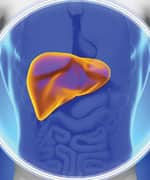
There are many different kinds of liver disease, each with its own set of causes, symptoms, and impact. But virtually all liver disorders come down to a few main causes, namely oxidative stress and inflammation that lead to liver cell damage and loss of function.3
While most of us take our liver for granted, this workhouse of the body labors tirelessly to rid the body of accumulated toxins. Fortunately, the liver is well-equipped to deal with those toxins, operating a diverse field of enzyme-driven detoxification systems to neutralize the majority of threats.2
But those systems operate at a high cost to the liver itself, generating massive amounts of free radicals that damage liver cell membranes and release inflammatory cytokines.21
Over time, all of those insults can damage your liver, impairing its ability to carry out its multiple detoxification tasks, and also its many other functions, such as producing bile to aid digestion, ridding the body of dangerous ammonia, making coagulation factors that help blood clot properly, manufacturing hormones, and a host of other physiological processes essential to life.
That is what makes prevention absolutely essential and what makes milk thistle so vital to maintaining a healthy liver.
Daily Protection For Your Liver
Milk thistle works in various unique ways to protect your liver on a daily basis from the onslaught of toxic materials and oxidative stress. Here are just a few of the ways that milk thistle provides protection for one of your most valuable organs.
- Silymarin’s potent antioxidant properties help to prevent and even reverse the oxidation of fats in liver cell membranes that lead to inflammation and leakage of liver cell contents into the bloodstream.9,22,23 Silymarin boosts liver cells’ levels of natural antioxidant molecules such as glutathione, helping cells recover more quickly from oxidative stress.5,24
- Silymarin reduces liver inflammation by inhibiting enzymes, such as 5-LOX, COX, and NFkB, that produce inflammatory cytokines and other deleterious signaling molecules that contribute to liver damage.25,26 Even if liver damage has already occurred (as it has in most of us by middle age), silymarin has powerful regenerative properties, boosting liver cells’ ability to make new proteins and repair damage before it can spread.25
- Silymarin has been shown to prevent liver fibrosis, the first step in the last stage of advanced liver disease, by protecting normal liver structural cells and blocking them from turning into fibrous, muscle-like cells.27,28
- Silymarin has the ability to block “Phase-I” liver enzymes that can activate toxins we ingest.25 “Phase-I” liver enzymes convert certain compounds into oxidative substances that are difficult for the body to excrete.2 In the presence of silymarin, these dangerous molecules can be excreted harmlessly in urine.
Alcoholic Liver Disease
Of all the substances that can damage your liver, one of the best-known is alcohol. While low-level consumption of alcohol (especially wine) has proven health benefits, larger amounts impose extreme oxidative stress on liver tissue.29 Ultimately, that leads to inflammatory changes and the release of cytokines that damage the liver and other tissues, which creates a vicious cycle and leads to still further oxidative stress.2,19,30 Animal studies have found that silymarin has the potential to reverse alcohol-induced liver damage.16,19
In animal studies, acute alcohol administration produced prominent accumulations of fat in liver cells, with small areas of dead tissue (necrosis), accompanied by a rise in liver enzymes in the blood (from leaking, dying cells).16 Alcohol also sharply lowers the liver’s content of glutathione (the main intracellular antioxidant), leaving cells vulnerable to further oxidant damage. In addition, excessive alcohol consumption markedly increases levels of the destructive cytokine TNF-alpha. Amazingly, when the animals were supplemented with silymarin, all of these adverse alcohol-induced changes were prevented.19
A human study of 36 people with chronic alcoholic liver disease revealed similar findings.31 Patients took either silymarin or placebo every day for six months. At baseline, all patients had elevations of liver enzymes and other markers of liver damage in their blood; they also had biopsy-proven tissue damage.
Following treatment, however, all of the markers of liver damage had normalized in the silymarin group, with minimal changes among placebo recipients. Repeated biopsies revealed improvement in the silymarin group, but no changes in the placebo patients. This study was a powerful demonstration of silymarin’s liver-protective activity, and its ability to improve liver function in alcoholic patients.31
What You Need to Know
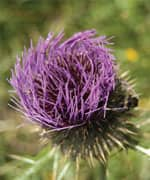 |
Benefits of Milk Thistle
- The liver is threatened daily by a constant barrage of toxins, unhealthful dietary components, and infections; it also produces many new toxic, oxidizing molecules as a result of its normal activity.
- Liver disease claims the lives of thousands of Americans each year, and disrupts the health of millions more.
- Mainstream medicine has virtually nothing to offer victims of liver disease, but an age-old remedy, the extract of milk thistle, provides bright new hope.
- Milk thistle extracts are antioxidant and anti-inflammatory; they also boost normal liver regenerative properties and fight specific toxins.
- The most powerful component of milk thistle, silybin, is poorly absorbed on its own, but complexed with phosphatidylcholine, another beneficial nutrient, its bioavailability to the liver is boosted 10-fold.
Non-Alcoholic Fatty Liver Disease
Non-alcoholic fatty liver disease (NAFLD) has rapidly become the most common cause of chronic liver disease in industrialized nations.32 The disease is a direct consequence of our high-fat, high-carbohydrate diets and our sedentary lifestyles.
Mainstream medicine has little to offer for those suffering from non-alcoholic fatty liver disease. Fortunately, silymarin holds out substantial promise.19 In fact, one study found that silybin was more effective than prescription rosiglitazone in certain areas of treatment.5
Animal studies have shown that both silymarin and silybin reduce oxidation of liver cell membranes, reduce blood liver enzyme levels, and enhance production of protective adiponectin.5,33
Human studies have also been very encouraging. Because non-alcoholic fatty liver disease is part of the metabolic syndrome, attempts have been made to treat it with insulin sensitizing drugs like metformin and pioglitazone, but with only modest success. In a 2012 study, researchers compared both drugs with silymarin (140 mg/day).34 All three treatments produced improvements in fasting blood sugar, lipid profiles, insulin levels, and insulin resistance, along with decreases in blood levels of liver enzymes. But the greatest decrease in the liver enzymes was seen in the silymarin group, indicating greater protection against liver damage.34
As promising as silybin is on its own, the availability of silybin in combination with phosphatidylcholine has proven to be a major step forward in managing non-alcoholic fatty liver disease. One early study of patients with non-alcoholic fatty liver disease, with or without the complication of hepatitis C infection, showed significant reductions in plasma markers of liver fibrosis (the first step towards deadly non-alcoholic steatohepatitis know as NASH), and significant improvements in insulin resistance, using a combination of silybin, vitamin E, and phospholipids.35
A more recent, larger trial of a unique combination of silybin with phosphatidylcholine and vitamin E demonstrated significant improvements in liver enzymes, insulin resistance, and the appearance of liver tissue on biopsy, none of which were seen in placebo recipients.27 In addition, body mass index was completely normalized in 15% of supplemented patients, compared with just 2% of controls. And in patients with hepatitis C infection, the supplement improved markers of liver fibrosis.
Increasing Milk Thistle Absorption
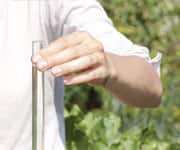 |
As beneficial as milk thistle is, there’s one thing keeping it from reaching its fullest potential: silybin, the star component of silymarin, does not dissolve well in water.20,25 That makes it have poor bioavailability, meaning it’s difficult for your body to absorb.11-13,24
But scientists have now developed a simple but effective technology to overcome silybin’s poor bioavailability. The solution is to mix the silybin with a nutrient called phosphatidylcholine.
Phosphatidylcholine is a major component of cell membranes; it can facilitate transport across the cells lining the intestines, making it an ideal “carrier molecule” for silybin.24,47 Scientists believe that the phosphatidylcholine molecularly bonds to the silybin molecule and wraps around it, ushering it through the membranes of cells in the intestinal tract.24
The silybin-phosphatidylcholine complex is absorbed nearly 5 times better than silymarin alone, and its ultimate concentration to the liver, its target organ, is 10-fold greater than silymarin alone.11-13
In a study of rats exposed to various liver toxins (including dry-cleaning fluid, acetaminophen, and alcohol), silybin plus phosphatidylcholine protected against the telltale rise in plasma levels of liver enzymes (a marker of liver damage), while the same doses of either nutrient alone had no detectable effect.8
A series of human trials has found that this complex also has better results than silymarin or silybin alone, lowering serum levels of liver enzymes and producing clinical improvement in studies of liver cirrhosis and hepatitis caused by alcohol, drugs, and viruses.24
Non-Alcoholic Steatohepatitis
In about 10% of cases, non-alcoholic fatty liver disease progresses to non-alcoholic steatohepatitis (NASH), a dangerous condition that ultimately produces liver fibrosis, cirrhosis, and even cancer.33,34 Milk thistle shows promise for this extremely serious form of liver disease as well.
In experimental non-alcoholic steatohepatitis, even a crude milk thistle extract reduced severity, lowered blood levels of liver enzymes, and dramatically reduced liver cytokine levels, while increasing liver glutathione (the liver’s protective natural antioxidant).36 Silybin has been shown to completely restore vital liver functions in animals with non-alcoholic steatohepatitis, improving insulin sensitivity and markers of oxidative and inflammatory damage.26,37
It also suppressed the transformation of normal liver structural cells into the tough, inelastic tissue characteristic of liver fibrosis and cirrhosis, the end-stage phases of liver disease that follows non-alcoholic steatohepatitis.28
Impact of Liver Diseases on US Population
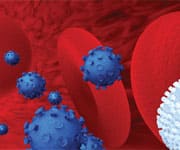 |
Disease |
United States Data |
Non-alcoholic Fatty Liver Disease (NAFLD)48 |
Prevalence- 8.1 to 30 million |
Alcoholic Liver Disease49 |
Annual Deaths- 15,990 |
Chronic Liver Disease/Cirrhosis50 |
Annual New Cases- 101,000 |
Hepatitis B51 |
Annual New Cases- 3,374 |
Hepatitis C52 |
Annual New Cases- 17,000 |
Viral Hepatitis
Viral hepatitis is a catch-all phrase for infections by several very different viruses that affect the liver, causing liver damage and raising the risk for liver cancer—especially in the case of hepatitis B and C. Both hepatitis B and C can set up chronic, long-lived infection (chronic active hepatitis) that can progress to fibrosis and cirrhosis.38
Silymarin treatment in acute viral hepatitis can speed the normalization of liver enzymes in the blood, indicating a regression of active liver damage.39
A group of patients with chronic active hepatitis took 240 mg of silybin combined with phosphatidylcholine, or placebo, twice daily for 7 days.40 Supplemented patients had significant drops in all markers of liver damage, while control patients experienced no changes.
While effective against hepatitis-induced liver damage, oral silymarin produces no reduction in the number of virus particles infecting the body, but studies of silymarin given intravenously reveal a substantial antiviral effect in hepatitis C patients who have not responded to standard antiviral treatment.41
The characteristic yellowish skin of hepatitis victims is the result of high levels of bilirubin, a liver-produced substance normally excreted in stool. But patients receiving oral silymarin for hepatitis (regardless of which virus type) had earlier improvement in both skin coloration and clinical markers of liver damage compared to control patients.42
Cirrhosis

Milk thistle extracts have been shown to benefit cirrhosis, the end-stage result of liver damage. Cirrhosis can result from multiple causes, including alcoholic and non-alcoholic fatty liver disease, viral hepatitis, and many toxins.43 In other words, cirrhosis doesn’t represent a single diagnosis, but a largely preventable progression of the oxidation and inflammation produced by all those other causes.
Unfortunately, prevention has so far eluded most medical interventions. As a result, those with cirrhosis are faced with either a slow and uncomfortable death, or a liver transplant, which is costly, dangerous, and not available to everyone.
Fortunately, milk thistle extracts are showing considerable promise in this desperate situation. One early study found that in people with alcohol-induced cirrhosis, those taking silymarin survived longer than control subjects.44 A later study confirmed that finding, with 58% of silymarin-treated patients surviving longer than 4 years, compared with just 39% of the placebo group.45
Even when liver disease has reached the stage of cirrhosis, silymarin treatment can normalize elevated liver enzymes in the blood, indicating that it has slowed the progression of liver damage.46 Proof of this comes from a study in an extremely challenging population: alcoholic diabetics with cirrhosis. In that group, silymarin treatment, 600 mg/day, reduced markers of cell membrane oxidation and improved insulin resistance.3 In fact, silymarin recipients had less overproduction of their own insulin, and required less insulin by injection, compared with control patients.3 The early stages of type II diabetes are characterized by excess pancreatic secretion of insulin to suppress elevated glucose. As type II diabetes progresses, the pancreas loses its ability to produce enough insulin and some patients require insulin injections. A therapy that reduces the amount of insulin needed by injection, or its excess production in the pancreas is considered beneficial.
Summary
The seed extract of the common milk thistle, rich in silymarin and its active component, silybin, has now been thoroughly proven to mitigate and, in some cases, reverse liver damage. These compounds have efficacy in liver disease caused by alcohol, by diet and inactivity, by viruses, and by exogenous toxins. They can slow the deadly progression to cirrhosis, the end-stage of all liver diseases.
Researchers have found that when silybin is combined with phosphatidylcholine, the absorption and bioavailability of an oral dose of silybin is increased 10-fold.11 This breakthrough improves the delivery of the benefits of milk thistle extracts for liver health.
If you have any questions on the scientific content of this article, please call a Life Extension® Health Advisor at 1-866-864-3027.
Editor's Note
Science continues to evolve, and new research is published daily. As such, we have a more recent article on this topic: Milk Thistle Promotes Liver Detoxification
References
- Available at: www.health.nytimes.com/health/guides/disease/alcoholic-liver-disease. Accessed July 29, 2013.
- Fu ZD, Csanaky IL, Klaassen CD. Effects of aging on mRNA profiles for drug-metabolizing enzymes and transporters in livers of male and female mice. Drug Metab Dispos. 2012 Jun;40(6):1216-25.
- Velussi M, Cernigoi AM, De Monte A, Dapas F, Caffau C, Zilli M. Long-term (12 months) treatment with an anti-oxidant drug (silymarin) is effective on hyperinsulinemia, exogenous insulin need and malondialdehyde levels in cirrhotic diabetic patients. J Hepatol. 1997 Apr;26(4):871-9.
- Yao J, Zhi M, Minhu C. Effect of silybin on high-fat-induced fatty liver in rats. Braz J Med Biol Res. 2011 Jul;44(7):652-9.
- Sangeetha N, Viswanathan P, Balasubramanian T, Nalini N. Colon cancer chemopreventive efficacy of silibinin through perturbation of xenobiotic metabolizing enzymes in experimental rats. Eur J Pharmacol. 2012 Jan 15;674(2-3):430-8.
- Pradhan SC, Girish C. Hepatoprotective herbal drug, silymarin from experimental pharmacology to clinical medicine. Indian J Med Res. 2006 Nov;124(5):491-504.
- Available at: https://www.cancer.gov/about-cancer/treatment/cam/hp/milk-thistle-pdq. Accessed July 17, 2013.
- Conti M, Malandrino S, Magistretti MJ. Protective activity of silipide on liver damage in rodents. Jpn J Pharmacol. 1992 Dec;60(4):315-21.
- Available at: https://www.thorne.com/ingredients/silybin-phytosome. Accessed July 17, 2013.
- Loguercio C, Andreone P, Brisc C, et al. Silybin combined with phosphatidylcholine and vitamin E in patients with nonalcoholic fatty liver disease: a randomized controlled trial. Free Radic.Biol Med. 2012;52(9):1658-65.
- Morazzoni P, Magistretti MJ, Giachetti C, Zanolo G. Comparative bioavailability of silipide, a new flavanolignan complex, in rats. Eur J Drug Metab Pharmacokinet. 1992 Jan-Mar;17(1):39-44.
- Morazzoni P, Montalbetti A, Malandrino S, Pifferi G. Comparative pharmacokinetics of silipide and silymarin in rats. Eur J Drug Metab Pharmacokinet. 1993 Jul-Sep;18(3):289-97.
- Barzaghi N, Crema F, Gatti G, Pifferi G, Perucca E. Pharmacokinetic studies on IdB 1016, a silybin- phosphatidylcholine complex, in healthy human subjects. Eur J Drug Metab Pharmacokinet. 1990;15(4):333-38.
- Fan S, Yu Y, Qi M, et al. P53-mediated GSH depletion enhanced the cytotoxicity of NO in silibinin-treated human cervical carcinoma HeLa cells. Free Radic Res. 2012 Sep;46(9):1082-92.
- Abenavoli L, Capasso R, Milic N, Capasso F. Milk thistle in liver diseases: past, present, future. Phytother Res. 2010 Oct;24(10):1423-32.
- Zhu HJ, Brinda BJ, Chavin KD, Bernstein HJ, Patrick KS, Markowitz JS. An assessment of pharmacokinetics and antioxidant activity of free silymarin flavonolignans in healthy volunteers: A dose escalation study. Drug Metab Dispos. 2013 Jul 8. [Epub ahead of print]
- Ramasamy K, Agarwal R. Multitargeted therapy of cancer by silymarin. Cancer Lett. 2008 Oct 8;269(2):352-62.
- Ravichandran K, Velmurugan B, Gu M, Singh RP, Agarwal R. Inhibitory effect of silibinin against azoxymethane-induced colon tumorigenesis in A/J mice. Clin Cancer Res. 2010 Sep 15;16(18):4595-606.
- Song Z, Deaciuc I, Song M, et al. Silymarin protects against acute ethanol-induced hepatotoxicity in mice. Alcohol Clin Exp Res. 2006 Mar;30(3):407-13.
- Kidd P Fau - Head K, Head K. A review of the bioavailability and clinical efficacy of milk thistle phytosome: a silybin-phosphatidylcholine complex (Siliphos). Altern Med Rev. 2005 Sep;10(3):193-203.
- Dolphin D. Cytochrome P450: substrate and prosthetic-group free radicals generated during the enzymatic cycle. Philos Trans R Soc Lond B Biol Sci. 1985 Dec 17;311(1152):579-91.
- Flora K, Hahn M, Rosen H, Benner K. Milk thistle (Silybum marianum) for the therapy of liver disease. Am J Gastroenterol. 1998 Feb;93(2):139-43.
- Kren V, Walterova D. Silybin and silymarin--new effects and applications. Biomed Pap Med Fac Univ Palacky Olomouc Czech Repub. 2005 Jun;149(1):29-41.
- Kidd PM. Bioavailability and activity of phytosome complexes from botanical polyphenols: the silymarin, curcumin, green tea, and grape seed extracts. Altern Med Rev. 2009;14(3):226-46.
- Dixit N, Baboota S, Kohli K, Ahmad S, Ali J. Silymarin: A review of pharmacological aspects and bioavailability enhancement approaches. Indian J Pharmacol. 2007;39(4):172-79.
- Salamone F, Galvano F, Cappello F, Mangiameli A, Barbagallo I, Li Volti G. Silibinin modulates lipid homeostasis and inhibits nuclear factor kappa B activation in experimental nonalcoholic steatohepatitis. Transl Res. 2012 Jun;159(6):477-86.
- Loguercio C, Andreone P, Brisc C, et al. Silybin combined with phosphatidylcholine and vitamin E in patients with nonalcoholic fatty liver disease: a randomized controlled trial. Free Radic Biol Med. 2012 May 1;52(9):1658-65.
- Kim M, Yang SG, Kim JM, Lee JW, Kim YS, Lee JI. Silymarin suppresses hepatic stellate cell activation in a dietary rat model of non-alcoholic steatohepatitis: analysis of isolated hepatic stellate cells. Int J Mol Med. 2012 Sep;30(3):473-9.
- Dunn W, Xu R, Schwimmer JB. Modest wine drinking and decreased prevalence of suspected nonalcoholic fatty liver disease. Hepatology. 2008 Jun;47(6):1947-54.
- Lieber CS. Pathogenesis and treatment of alcoholic liver disease: progress over the last 50 years. Rocz Akad Med Bialymst. 2005;50:7-20.
- Feher J, Deak G, Muzes G, et al. Liver-protective action of silymarin therapy in chronic alcoholic liver diseases. Orv Hetil. 1989 Dec 17;130(51):2723-7.
- Masuoka HC, Chalasani N. Nonalcoholic fatty liver disease: an emerging threat to obese and diabetic individuals. Ann N Y Acad Sci. 2013 Jan 30.
- Trappoliere M, Tuccillo C, Federico A, et al. The treatment of NAFLD. Eur Rev Med Pharmacol Sci. 2005 Sep-Oct;9(5):299-304.
- Hajiaghamohammadi AA, Ziaee A, Oveisi S, Masroor H. Effects of metformin, pioglitazone, and silymarin treatment on non-alcoholic Fatty liver disease: a randomized controlled pilot study. Hepat Mon. 2012 Aug;12(8):e6099.
- Trappoliere M, Federico A, Tuccillo C, et al. Effects of a new pharmacological complex (silybin + vitamin-E + phospholipids) on some markers of the metabolic syndrome and of liver fibrosis in patients with hepatic steatosis. Preliminary study. Minerva Gastroenterol Dietol. 2005 Jun;51(2):193-9.
- Aghazadeh S, Amini R, Yazdanparast R, Ghaffari SH. Anti-apoptotic and anti-inflammatory effects of Silybum marianum in treatment of experimental steatohepatitis. Exp Toxicol Pathol. 2011 Sep;63(6):569-74.
- Salamone F, Galvano F, Marino Gammazza A, et al. Silibinin improves hepatic and myocardial injury in mice with nonalcoholic steatohepatitis. Dig Liver Dis. 2012 Apr;44(4):334-42.
- Available at: http://www.cdc.gov/hepatitis. Accessed July 18, 2013.
- Magliulo E, Gagliardi B, Fiori GP. Results of a double blind study on the effect of silymarin in the treatment of acute viral hepatitis, carried out at two medical centres (author’s transl). Med Klin. 1978 Jul 14;73(28-29):1060-5.
- Buzzelli G, Moscarella S, Giusti A, Duchini A, Marena C, Lampertico M. A pilot study on the liver protective effect of silybin-phosphatidylcholine complex (IdB1016) in chronic active hepatitis. Int J Clin Pharmacol Ther Toxicol. 1993 Sep;31(9):456-60.
- Ferenci P, Scherzer TM, Kerschner H, et al. Silibinin is a potent antiviral agent in patients with chronic hepatitis C not responding to pegylated interferon/ribavirin therapy. Gastroenterology. 2008 Nov;135(5):1561-7.
- El-Kamary SS, Shardell MD, Abdel-Hamid M, et al. A randomized controlled trial to assess the safety and efficacy of silymarin on symptoms, signs and biomarkers of acute hepatitis. Phytomedicine. 2009 May;16(5):391-400.
- Available at: http://www.webmd.com/digestive-disorders/cirrhosis-liver. Accessed July 18, 2013.
- Benda L, Dittrich H, Ferenzi P, Frank H, Wewalka F. The influence of therapy with silymarin on the survival rate of patients with liver cirrhosis (author’s transl). Wien Klin Wochenschr. 1980 Oct 10;92(19):678-83.
- Ferenci P, Dragosics B, Dittrich H, et al. Randomized controlled trial of silymarin treatment in patients with cirrhosis of the liver.J Hepatol. 1989 Jul;9(1):105-13.
- Lang I, Nekam K, Deak G, et al. Immunomodulatory and hepatoprotective effects of in vivo treatment with free radical scavengers. Ital J Gastroenterol. 1990 Oct;22(5):283-7.
- Available at: http://www.altmedrev.com/publications/7/2/150.pdf. Accessed July 18, 2013.
- Takahashi Y, Fukusato T, Inui A, Fujisawa T. Pediatric nonalcoholic fatty liver disease/nonalcoholic steatohepatitis. Nihon Rinsho. 2012 Oct;70(10):1827-34.
- Available at: http://www.cdc.gov/nchs/fastats/alcohol.htm. Accessed July 18, 2013.
- Available at: http://www.cdc.gov/nchs/fastats/liverdis.htm. Accessed March 6, 2013.
- Available at: http://www.cdc.gov/nchs/fastats/hepatits.htm. Accessed July 18, 2013.
- Available at: http://www.cdc.gov/hepatitishcv/hcvfaq.htm. Accessed July 18, 2013.

